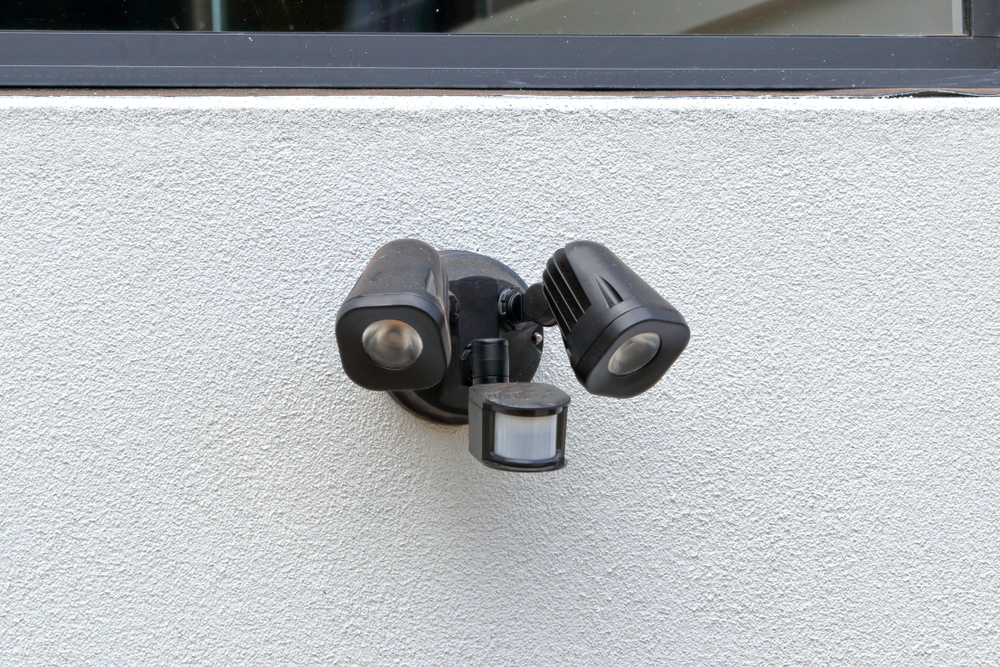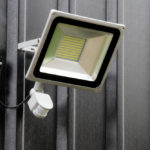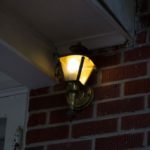A Tricky DIY Task for Electronically Experienced Individuals
In this day and age, it’s easy enough to throw a bunch of cash at an array of smart security lighting, connect them up using the internet and some sort of hub, and enjoy a choreographed, luminous display.
But what if you don’t have the money for all that, or perhaps you live rurally, and your internet connection’s a little dicey at the best of times? Are you supposed to just live with the knowledge that your first line of home defense may or may not work come crunch time?
Well, we say no! Absolutely not. You deserve the same peace of mind and reassurance as any other homeowner, which is why we’ve created this guide.

Rather than linking multiple smart lights up with an app and a smart hub, each with its own motion sensor, you can physically wire a single motion sensor to a whole array of security lights.
It takes some specialist knowledge, a lot of confidence, and a spot of elbow grease, but if that sounds okay to you, then let’s bring this preamble to a close and get to work!
What Are The Benefits Of Syncing Multiple Lights To A Single Motion Sensor?
You may be wondering what the point of linking one motion sensor to multiple lights is. It does seem like a pretty strange DIY task, but there are a few key benefits.
Security
We feel that the most essential benefit of linking multiple security cameras up with a singular motion sensor is that it creates a more secure perimeter around your home.
Don’t get us wrong, discrete security lights are better than none at all, but they’re easily avoided when working solo. A trespasser with nasty intentions could easily circumnavigate them or simply hide in the shadows until the light switches off.
When multiple security lights are working in conjunction, a wider area is saturated with light, forcing the shadows and those that lurk in them further away.
You’re also more likely to notice multiple lights turn on outside than just one, giving you a chance to prepare. You may even catch a glimpse of the ne’er do well while they’re exposed in the wide blast of blinding light.
Safety
A wider light response also makes your property easier to navigate at night, as you can see your land in one picture, rather than waiting for it to illuminate as you go. If you’ve got a particularly varied landscape around your home, this can be an absolute lifesaver.
Money
One motion sensor for multiple lights means that you can save a few buckaroos for investment in other aspects of your home security system.
Are There Any Risks Involved With Wiring A Motion Sensor To Multiple Lights Yourself?
Electrics always pose a serious risk, especially to those who go into a task without prior wiring know-how, so, at the very least, you need to have dabbled with some form of electrical engineering before giving this a shot.
Hooking your motion sensor up to multiple lights isn’t exactly an easy task, so awareness of your own abilities is essential. Unless you’re absolutely sure you’ll be able to get the job done safely, call it quits and contact a professional.
Sure, it would be nice to save some money and do it yourself, and the warm buzz of wellbeing you get after accomplishing something is great too, but, as we’re sure you’re aware, electricity can be deadly.
If you go into this green, not only do you stand to receive a nasty electric shock, there’s also a risk of sparking an electrical fire, in which case, you won’t have much home left to secure.
Then, of course, if you’re inexperienced, there’s always a distinct chance that you’ll lay the circuitry wrong, and all your efforts will have been for naught.
Wiring A Motion Sensor To Multiple Lights — DIY Style
Before we get started, we’d like to preface this guide by mentioning that we’ve decided to keep it quite generic for a couple of reasons.
Firstly, most circuits are completely different from one another, and we don’t know the specifics of what you’re dealing with, so specific instructions would be redundant, not to mention, dangerous.
And secondly, you should really only be trying this if you have expertise in the area. We don’t want to encourage someone without the skills to try this out.
With that said, let’s get down to business.
- Shut down the power supply of both the lights and the motion sensor.
The golden rule of electronics is that you never, ever work on a live circuit. Every electrical device in the vicinity should be switched off at the mains.
- Figure out where the lights are drawing power from.
Security lights may well have multiple power sources. Your job is to locate them and mark them all off.
- Sever the lights from their power sources.
- Reroute the wiring of the lights to a new, singular power source.
You’ll need to introduce a relay to the circuit to ensure that it won’t short. This is because the circuit will be established over a long distance, and the longer a wire is, the greater its resistance, which means that the electrons will be colliding with significantly more ions in the metal, limiting flow.
- Install a switch and link it to the motion sensor.
Connect up the black wires of the lighting, giving yourself plenty of slack to work with — don’t make things any harder than they need to be.
Introduce the switch to a power source, and if you feel a resistor(s) is necessary, don’t hesitate to install it.
- Coat all exposed wiring.
Exposed wiring is a recipe for disaster, so make sure it’s all generously coated in rubber or, at the very least, some electrical tape.
- Give it a whirl.
Be sure to test your new setup before installing your lights. We recommend using an outdoor outlet for the inaugural illumination.
How To Wire A Motion Sensor To Multiple Lights — Summing Up
That’s how it’s done, folks. It’s a fiddly task, but it is possible. However, if you have any reservations about doing it yourself, don’t!
You can call in a professional or even just buy a security light array that already functions with a single motion sensor. It’ll set you back a few bucks, but you can’t put a price on your own safety.



